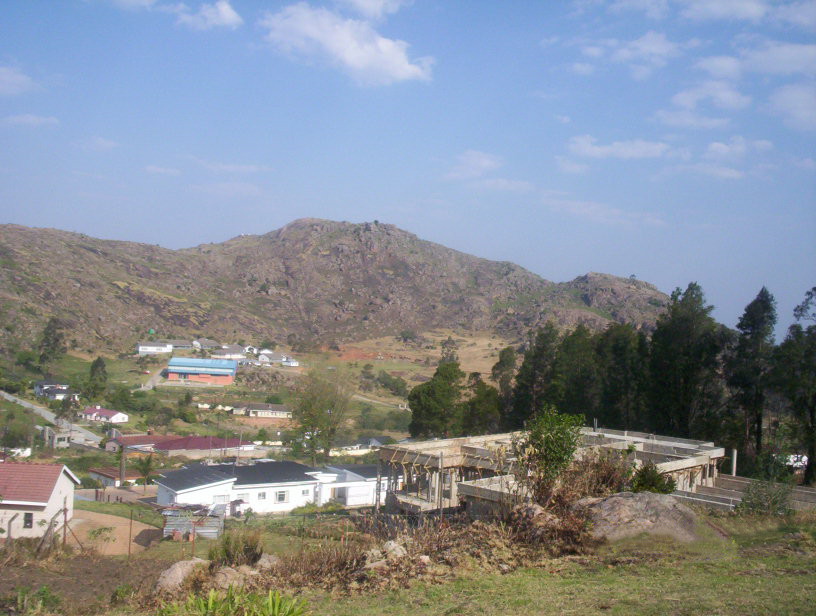|
Mbabane, Swaziland
Mbabane (; ss, ÉMbábáne, ) is a city in Eswatini (previously called Swaziland), and is one of the two capitals (along with Lobamba), serving as the executive capital. With an estimated population of 94,874 (2010), it is located on the Mbabane River and its tributary the Polinjane River in the Mdzimba Mountains. It is located in the Hhohho Region, of which it is also the capital. The average elevation of the city is 1,243 meters. It lies on the MR3 road. History The town grew after the nation's administrative centre moved from Bremersdorp (now called Manzini) in 1902. It derives its name from a chief, Mbabane Kunene, who lived in the area when British settlers arrived. Mbabane was founded in 1887 by Mickey Wells, on the spot where the Transvaal-to-Mozambique route crossed the Mbabane river. It was declared the capital of the new Protectorate of Swaziland in 1902. During this time, Mbabane consisted of a few shops, churches and schools founded by white settlers. Black African ... [...More Info...] [...Related Items...] OR: [Wikipedia] [Google] [Baidu] |
Hhohho District
Hhohho () is a region of Eswatini, located in the north western part of the country. Hhohho was named after the capital of King Mswati II, who expanded the Swazi territory to the north and west, taking in the districts of Barberton, Nelspruit, Carolina and Piet Retief. These areas were later acquired by what was the Province of Transvaal and today they form part of the Mpumalanga Province of South Africa. It has an area of 3,625.17 km², a population of 320,651 (2017), and is divided into 14 tinkhundla. The administrative center is the national capital of Mbabane. It borders Lubombo Region on the southeast and Manzini Region in the southwest. Etymology The name Hhohho was the name of the royal capital of Mswati II, a 19th-century king of Eswatini. After the Anglo-Boer war, Eswatini came under British administration. A partition of the country into districts followed and Hhohho was the name chosen for the northernmost district. History The region of Eswatini which is tod ... [...More Info...] [...Related Items...] OR: [Wikipedia] [Google] [Baidu] |
History Of Swaziland
Artifacts indicating human activity dating back to the early Stone Age have been found in the Kingdom of Eswatini. The earliest known inhabitants of the region were Khoisan hunter-gatherers. Later, the population became predominantly Nguni during and after the great Bantu migrations. People speaking languages ancestral to the current Sotho and Nguni languages began settling no later than the 11th century.Bonner, Philip (1983). ''Kings, Commoners and Concessionaires: The Evolution and Dissolution of the Nineteenth-Century Swazi State''. Cambridge: Cambridge U. Press. See esp. pp. 60, 85–88. The country now derives its name from a later king named Mswati II. Mswati II was the greatest of the fighting kings of Eswatini, and he greatly extended the area of the country to twice its current size. The people of Eswatini largely belong to a number of clans that can be categorized as ''Emakhandzambili'', ''Bemdzabu'', and ''Emafikamuva'', depending on when and how they settled in Eswat ... [...More Info...] [...Related Items...] OR: [Wikipedia] [Google] [Baidu] |
Sugar
Sugar is the generic name for sweet-tasting, soluble carbohydrates, many of which are used in food. Simple sugars, also called monosaccharides, include glucose, fructose, and galactose. Compound sugars, also called disaccharides or double sugars, are molecules made of two bonded monosaccharides; common examples are sucrose (glucose + fructose), lactose (glucose + galactose), and maltose (two molecules of glucose). White sugar is a refined form of sucrose. In the body, compound sugars are hydrolysed into simple sugars. Longer chains of monosaccharides (>2) are not regarded as sugars, and are called oligosaccharides or polysaccharides. Starch is a glucose polymer found in plants, the most abundant source of energy in human food. Some other chemical substances, such as glycerol and sugar alcohols, may have a sweet taste, but are not classified as sugar. Sugars are found in the tissues of most plants. Honey and fruits are abundant natural sources of simple sugars. Suc ... [...More Info...] [...Related Items...] OR: [Wikipedia] [Google] [Baidu] |

